

— Blogs —
—Products—
 Consumer hotline +8618073152920
Consumer hotline +8618073152920 WhatsApp:+8615367865107
Address:Room 102, District D, Houhu Industrial Park, Yuelu District, Changsha City, Hunan Province, China
Product knowledge
Time:2024-10-27 16:30:00 Popularity:584
Ambient temperature sensors are devices that sense the temperature of the surrounding environment and convert it into an electrical signal, and are widely used in a variety of fields, from home automation to industrial control, weather monitoring, automotive electronics, medical devices, etc. These sensors can be categorized into different types based on their operating principles and application requirements. These sensors can be categorized into different types according to their operating principles and application requirements, each with its own unique characteristics and applicable scenarios.
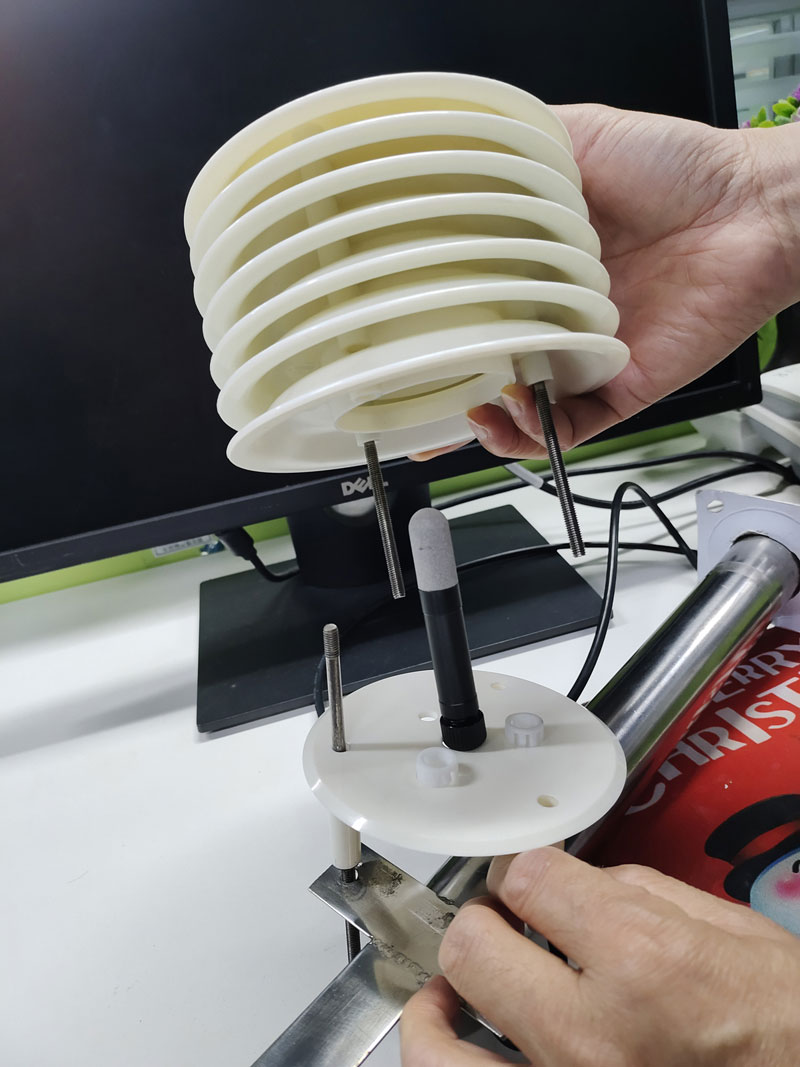
The working principle of ambient temperature sensor is mainly based on the following effects:
- Thermistor (NTC/PTC):
- NTC (Negative Temperature Coefficient): the resistance value decreases when the temperature increases and increases when the temperature decreases. Commonly used materials include carbon, ceramics, etc.
- PTC (Positive Temperature Coefficient): The resistance value increases when the temperature rises and decreases when the temperature falls. Commonly used materials include polymers and ceramics.
- Applications: air conditioning, refrigerator temperature control, automotive electronics, consumer electronics.
- Characteristics: fast response, cheap, but relatively low precision.
- Thermocouple:
- Principle: Wires composed of two different metallic materials produce a thermoelectric potential difference when the two contact points are at different temperatures. Common combinations include Copper-Constantan, Nickel-Chromium-Nickel-Silicon, and so on.
- Application: high temperature melting, industrial furnace temperature control, scientific research experiments.
- Characteristics: Suitable for high-temperature measurement, wide range, but relatively low precision.
- RTDs (e.g. PT100):
- Principle: Based on the property that the resistance value of a metallic material (usually platinum) varies with temperature. PT100 has a resistance value of 100 Ohm at 0°C.
- Applications: Industrial process control, medical equipment, precision temperature measurement systems.
- Characteristics: Provides high-precision measurements for wide temperature ranges, but at a higher cost.
- Infrared temperature sensors:
- Principle: Uses infrared radiation emitted by an object to measure its surface temperature. Infrared sensors usually contain an infrared detector and a signal processing unit.
- Application: Non-contact temperature measurement, suitable for hot or moving objects.
- Characteristics: No need to contact the measured object, suitable for hazardous or hard-to-reach environments.
- Piezoelectric temperature sensor:
- Principle: Temperature is calculated by measuring the voltage change in a piezoelectric material due to a change in temperature. Piezoelectric materials have a piezoelectric effect and generate a voltage signal when subjected to external forces or temperature changes.
- Application: Temperature monitoring in special environments.
- Characteristics: Suitable for applications requiring high sensitivity and fast response.
- Thermocouple: suitable for high temperature measurement with wide range.
- Thermistor (NTC/PTC): fast response and inexpensive.
- Thermistor (e.g. PT100): high precision, suitable for wide temperature range.
- Integrated temperature sensors: miniaturized, digital, easy to interface with microcontrollers.
- Composite Sensor: Measures temperature, humidity and air pressure simultaneously, suitable for multi-parameter monitoring.
- Infrared temperature sensor: non-contact measurement, suitable for high temperature or moving objects.
- Thermocouples: typically range from -200°C to +1300°C.
- Thermistors: Typical range from -50°C to +150°C.
- RTD (e.g. PT100): Typical range from -200°C to +850°C.
- Integrated temperature sensors: Typical range from -40°C to +125°C.
- Infrared temperature sensor: Typical range from -70°C to +800°C.
- Thermocouple: ±1% to ±2%.
- Thermistor: ±1% to ±5%.
- RTD (e.g. PT100): ±0.1% to ±0.5%.
- Integrated Temperature Sensor: ±0.1°C to ±1°C.
- Infrared Temperature Sensor: ±1°C to ±2°C.
- Thermocouple: a few seconds to tens of seconds.
- Thermistors: Milliseconds to seconds.
- RTD (e.g. PT100): a few seconds to tens of seconds.
- Integrated temperature sensors: milliseconds to seconds.
- Infrared temperature sensor: a few milliseconds to a few seconds. 5.
- Analog signals: voltage (mV), current (mA).
- Digital signals: I2C, SPI, UART, etc. R485 or RS123.
- R485 or RS232
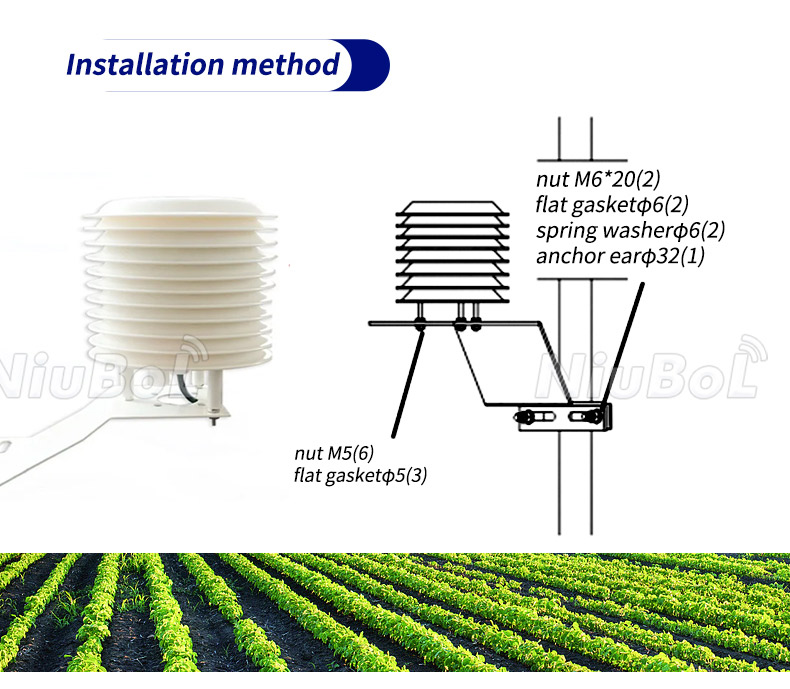
- Purpose: Used in weather stations and climate monitoring systems to help predict weather changes and study climate change.
- Characteristics: Requires high accuracy and long time stability.
- Purpose: Temperature sensors are used in smart home systems to regulate indoor temperature, such as linkage with air conditioners, heaters or underfloor heating systems.
- Characteristics: Fast response and low power consumption are required.
- Purpose: In the manufacturing industry, ambient temperature sensors are used to monitor the temperature of the production environment to ensure product quality and normal operation of equipment.
- Characteristics: High accuracy and high reliability are required.
- Purpose: To monitor the temperature of greenhouses or farms to create a suitable environment for crop growth or animal breeding.
- Characteristics: Need to work stably for a long time in an outdoor environment.
- Purpose: In the medical field, accurate temperature monitoring is critical for patient care and laboratory equipment.
- Characteristics: High precision and biocompatibility are required.
- Purpose: Used to monitor the temperature of vehicles, ships and airplanes to ensure passenger comfort and cargo safety.
- Characteristics: Need to work reliably in vibration and shock environments.
- Purpose: To monitor server room temperatures in data centers to prevent overheating and ensure proper equipment operation.
- Characteristics: Requires high accuracy and real-time monitoring capability.
- Purpose: To monitor the temperature during food storage and transportation to keep food fresh and safe.
- Characteristics: Stable operation under different environmental conditions is required.
- Purpose: In buildings, ambient temperature sensors are used to optimize energy use, such as automatically regulating heating and air conditioning systems.
- Characteristics: Low power consumption and long time stability are required.
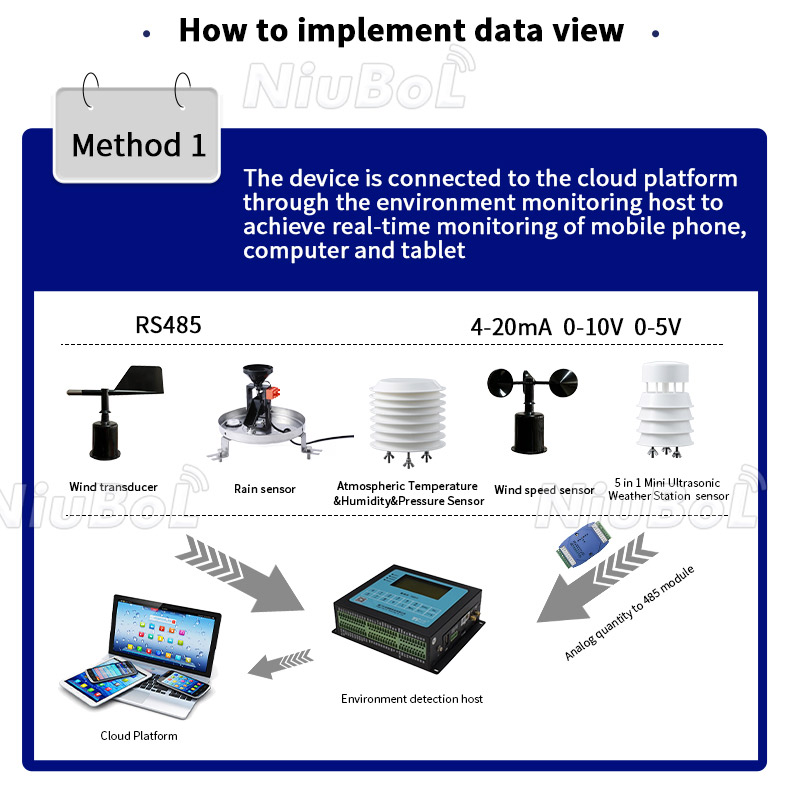
There are several factors to consider when selecting an ambient temperature sensor:
- Considerations: The sensor should be able to cover the temperature range to be measured. Depending on the application scenario, the sensor's measurement range may be required from very low to very high temperatures.
- Recommendation: Select a sensor with a measurement range greater than the actual application range to ensure that it will function properly even under extreme conditions.
- Considerations: High accuracy and good stability will ensure the accuracy and reliability of the measurement results.
- Suggestion: For applications that require high accuracy, choose a sensor with higher accuracy, such as PT100 or integrated temperature sensor.
- Considerations: Response time characterizes how sensitive the sensor is to temperature changes. In applications that require real-time temperature monitoring, it is more appropriate to select a sensor with a shorter response time.
- Recommendation: For applications requiring a fast response time, choose a thermistor or integrated temperature sensor.
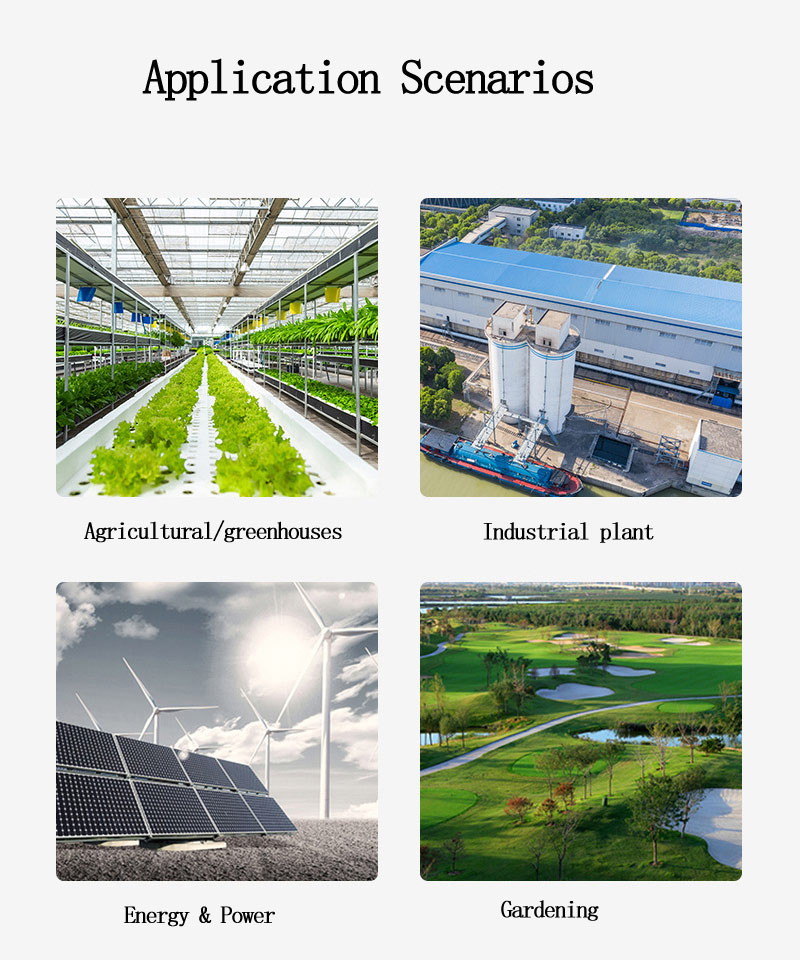
- Considerations: Sensors are often used for temperature measurements in harsh environments such as high temperature, low temperature, humid or corrosive environments. Selection needs to consider its ability to work properly in specific environmental conditions, and have a certain degree of anti-interference ability.
- Suggestion: Select sensors with protection class (e.g. IP67) and corrosion-resistant materials.
- Considerations: For low-power or mobile devices, the power consumption of the sensor is an important factor. You should try to select a model with lower power consumption to extend the life of the device.
- Suggestion: Choose an integrated temperature sensor or thermistor with low power consumption.
- Considerations: The interface and communication protocol of the sensor should be compatible with the existing system for easy integration and data transmission.
- Suggestion: Choose a sensor that supports standard interfaces (e.g., I2C, SPI) for easy connection to microcontrollers or other devices.
- Considerations: Cost is an important consideration in selecting a sensor, especially in large-scale applications.
- Suggestion: Select a cost-effective sensor while meeting performance requirements.
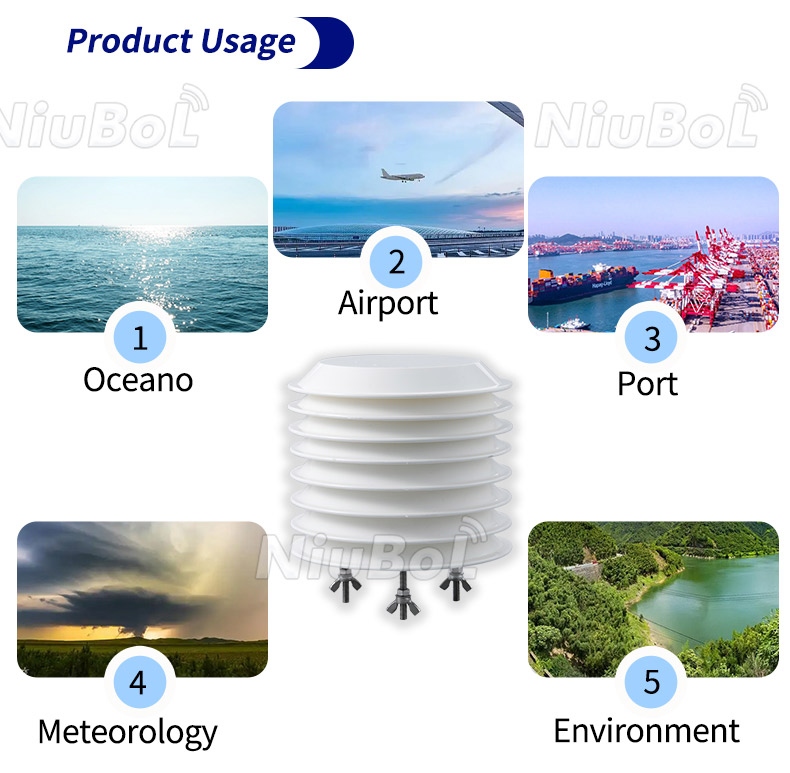
In summary, ambient temperature sensor is an important measurement tool that plays an important role in various fields. By understanding its working principle, application areas and selection considerations, you can better select and use ambient temperature sensors to meet a variety of needs. We hope that these detailed descriptions will be helpful to you!
NBL-W-WHT-Wall-Mounted-Temperature-Humidity-Sensors-Instruction-Manual.pdf
NBL-W-LBTH-Atmosphere-temperature-humidity-and-pressure-sensor-instruction-manual-V4.0.pdf
Related recommendations
Sensors & Weather Stations Catalog
Agriculture Sensors and Weather Stations Catalog-NiuBoL.pdf
Weather Stations Catalog-NiuBoL.pdf
Related products
 Combined air temperature and relative humidity sensor
Combined air temperature and relative humidity sensor Soil Moisture Temperature sensor for irrigation
Soil Moisture Temperature sensor for irrigation Soil pH sensor RS485 soil Testing instrument soil ph meter for agriculture
Soil pH sensor RS485 soil Testing instrument soil ph meter for agriculture Wind Speed sensor Output Modbus/RS485/Analog/0-5V/4-20mA
Wind Speed sensor Output Modbus/RS485/Analog/0-5V/4-20mA Tipping bucket rain gauge for weather monitoring auto rainfall sensor RS485/Outdoor/stainless steel
Tipping bucket rain gauge for weather monitoring auto rainfall sensor RS485/Outdoor/stainless steel Pyranometer Solar Radiation Sensor 4-20mA/RS485
Pyranometer Solar Radiation Sensor 4-20mA/RS485
Screenshot, WhatsApp to identify the QR code
WhatsApp number:+8615367865107
(Click on WhatsApp to copy and add friends)